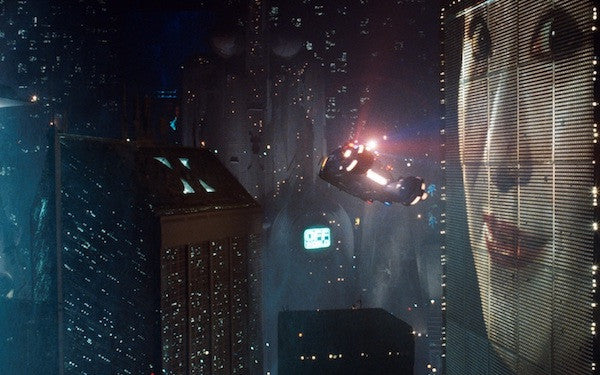

By Thomas Quillfeldt
Listen to enough music (and play enough games) and the chances are that you’ll come across songs or pieces that remind you of certain games.
Of course it’s a bit chicken and egg: music for modern video games has escaped the limitations of sound chips and can sound like anything—it also continues to be hugely influenced by popular music, arguably more so than ever. On the flip side, we’ve reached the point where popular music has absorbed the textures and timbres we associate with video games with notable artists, songwriters and producers professing their love for classic game music.
Rather than agonise over the distinction between ‘game music’ and simply ‘music’, here’s a quality selection where each track feels like it would be at home as part of the score or licensed soundtrack of a given game.
If you think we’re missing anything blindingly obvious, by all means holler at us on Twitter (@Laced_Records) or Facebook (/LacedMusicLtd).
“Red Right Hand” – Nick Cave & The Bad Seeds
Recently used as the title credits song for TV period drama Peaky Blinders, this 1994 track from Australia’s Nick Cave & The Bad Seeds would feel right at home among the soundtracks of Western-themed games like Red Dead Redemption (YouTube, Spotify), Call of Juarez: Gunslinger (YouTube) and Gun (YouTube)… anyone remember Gun?
“Walking Shoes” – Gerry Mulligan
There have been some brilliant jazz-infused game soundtracks over the years including Peter McConnell’s for Grim Fandango (YouTube, Spotify), Jim Fowler’s Wonderbook: Diggs Nightcrawler and the darker L.A. Noire (YouTube, Spotify) by Andrew Hale. Telltale’s The Walking Dead composer Jared Emerson-Johnson also pumped out some excellent jazzy tunes for that company’s three seasons of Sam & Max adventure games (YouTube).
This track from jazz legend Gerry Mulligan typifies the light and bright feel that many game composers set their sights on:
“Reverie” – Isao Tomita / Claude Debussy
Richard Vreeland, AKA, Disasterpeace has firmly established his sound through game scores for FEZ and Hyper Light Drifter, as well as indie movie It Follows.
Warm—but often warped and wonky—synthesiser sounds were also the preserve of Japanese composer/arranger Isao Tomita, who came to global prominence thanks to his 1974 Grammy-nominated album Snowflakes Are Dancing (YouTube, Spotify). This bizarre, dream-like record was an entirely synthesised rendition of several famous pieces by French impressionist composer, Claude Debussy.
You may recognise Tomita’s version of Clair de Lune used in Steven Soderbergh’s Ocean’s Thirteen.
“Paranoid [Ft. Mr. Hudson]” – Kanye West
Nintendo might be winning the nostalgia war in terms of present-day conversations about game design and all-time classics, but SEGA’s sense of style and aesthetics during the early- to mid-90’s lives on with soundtracks like Street of Rage 2 (YouTube) and OutRun (YouTube) still being celebrated today. The sounds of the 1991 SEGA flagship title, Sonic the Hedgehog, are so distinct, so memorable that they continue to permeate popular culture, including this Kanye West track:
“Meeting” – Zbigniew Preisner
Similar to Disasterpeace, Austin Wintory is a composer known for his distinctive sound (even if they are both plenty versatile). His video game soundtracks for Journey (YouTube, Spotify) and its spiritual successor, ABZÛ (YouTube, Spotify), both harness a mysterious, fantastical orchestral palette that elevates each game.
Polish film composer Zbigniew Preisner’s 1998 album Requiem for my Friend (Spotify) plumbs similar neo-Romantic depths with the second half of the album in particular featuring some beautiful work:
“Glawio” – Com Truise
A certain strain of ‘slow-motion funk’ infected electronica around 2011, coalescing with the neon-soaked, ultra-violent stylings of the film Drive and indie game sensation Hotline Miami (you may be familiar with it 😎). Given that Hotline Miami’s soundtrack is one of the great collections of underground electronica c. 2011-2012, pretty much anything (of a certain standard) from that scene feels like a good fit.
Whilst this track from Com Truise is on the mellow end of the eletro-funk scale, since Hotline Miami, we’ve seen driving, four-to-the-floor electronica turn up in all sorts of game soundtracks like Crypt of the NecroDancer (YouTube, Spotify) and 2016’s Furi (YouTube, Spotify).
“Treefingers” – Radiohead
We often visit alien worlds or float around in the vastness of space in video games which necessitates vast quantities of ambient music—Paul Ruskay’s Homeworld score (YouTube) is a great example.
More recently, there has been a spate of great, atmospheric ambient work—from Robin Finck's score for Noct (Spotify; released by Laced Records); Lara Croft GO by Pixel Audio (SoundCloud); Stafford Bawler’s work on Monument Valley (Spotify); and Ben Babbitt’s three (and counting) Kentucky Route Zero scores (YouTube, Apple Music).
This cut from Radiohead’s 2000 album Kid A is an aural warm bath that I’m reasonably sure the king of ambient, Brian Eno, would be proud of:
“End Titles From Blade Runner” & “One More Kiss, Dear” – Vangelis
Vangelis’ Blade Runner soundtrack IS the sound of cyberpunk, and the blueprint for many a video game soundscape. This cacophonous track has provided inspiration for many, and would sound at home among any of the Mass Effect soundtracks. Listen closely enough to Scrap Brain Zone from Sonic the Hedgehog and you’ll pick up various similarities.
Then there’s Vangelis’ own homage to the jazz songs of the 1930’s, One More Kiss, Dear, which would slip comfortably into the licensed soundtracks of the Fallout and BioShock series.
“Warszawa” – David Bowie
David Bowie and Brian Eno’s co-written instrumental from 1977’s Low is particularly reminiscent of some of Nobuo Uematsu’s emotionally heavier tracks from Final Fantasy VIII—such as Unrest or Drifting—as well as other of his scores from the 90’s.

